Master Crochet Yarn Types: Quick and Easy Beginner’s Guide
Have you ever walked into a craft store or looked online and the different crochet yarn types are overwhelming?
One of the most important aspects of crochet is choosing the right yarn for your project. With so many different types of yarn available, it can be overwhelming to know where to start. I am going to simplify that today.
The first thing to consider when choosing crochet yarn types is the fiber content. Yarn can be made from a variety of materials, including wool, cotton, acrylic, and more.
Each fiber has its own unique qualities, such as warmth, softness, and durability. It’s important to consider the properties of the fiber when selecting yarn for your project, as it can affect the final look and feel of your item.
Another important factor to consider is the weight of the yarn. Yarn weight refers to the thickness of the yarn, and it can range from super fine to super bulky.
The weight of the yarn you choose will depend on the type of project you’re working on and the desired outcome. This is import when it comes to crochet yarn types.
For example, a lightweight yarn may be better suited for a delicate shawl, while a bulky yarn may be better for a cozy blanket.
By understanding the different crochet yarn types available, you can make informed decisions when selecting yarn for your projects.
Table of Contents
Understanding Yarn Weight
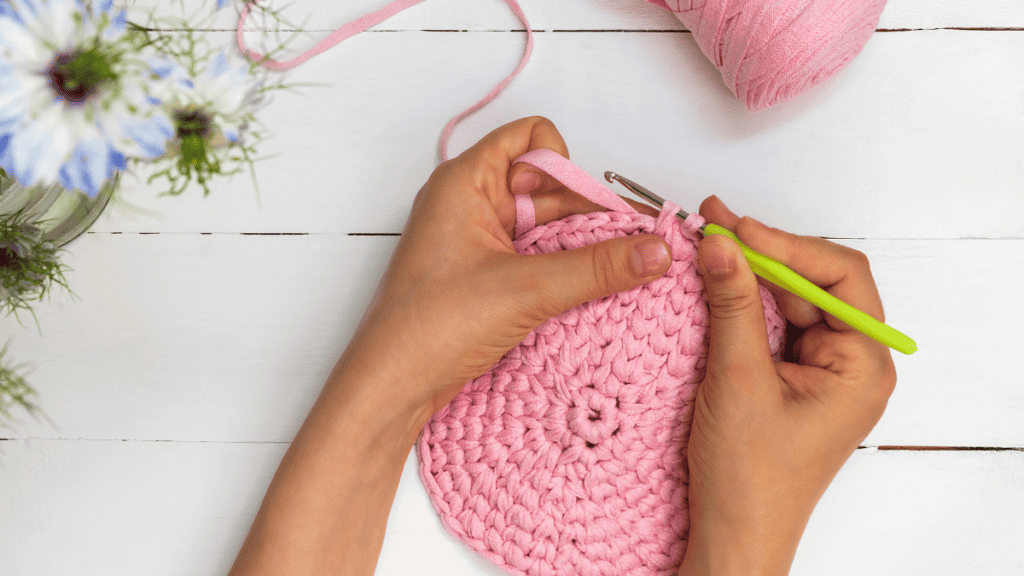
When it comes to crochet, understanding yarn weight is crucial. Yarn weight refers to the thickness of the yarn, which can greatly impact the final product. Here is a breakdown of the most common yarn weights:
- Lace weight yarn: This is the thinnest yarn available. It is often used for delicate projects like shawls or doilies.
- Fingering weight yarn: Slightly thicker than lace weight, this yarn is often used for socks or lightweight garments.
- Sport weight yarn: This yarn is great for lightweight sweaters or baby clothes.
- DK weight yarn: DK stands for “double knitting.” This yarn is a bit thicker than sport weight and can be used for a variety of projects.
- Worsted weight yarn: This is the most common yarn weight. It is versatile and can be used for a variety of projects, from hats to blankets.
- Bulky weight yarn: As the name suggests, this yarn is thick and is great for quick projects like scarves or hats.
- Super bulky weight yarn: This is the thickest yarn available and is great for chunky blankets or cowls.
It’s important to note that the weight of the yarn does not necessarily correspond with the weight of the finished project.
For example, a blanket made with bulky weight yarn may weigh less than a shawl made with lace weight yarn. Make sure and understand the different crochet yarn types.
When choosing yarn for a project, it’s important to consider the weight of the yarn and how it will impact the final product. Experimenting with different yarn weights can lead to some interesting and unique results.
Yarn Fibers
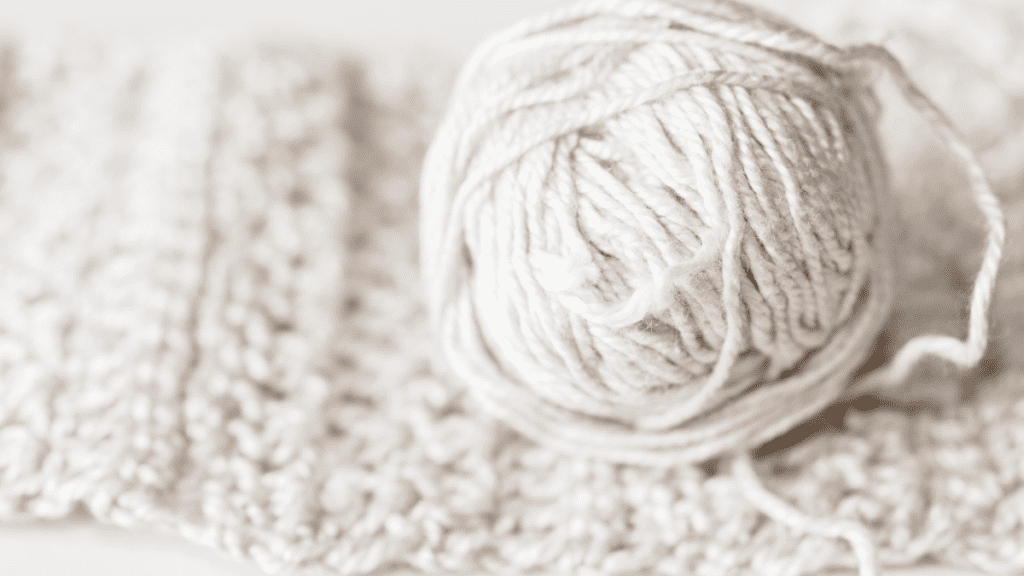
Crochet yarns come in a variety of fibers, each with its own unique properties and characteristics. Here are some of the most common types of fibers used in crochet and why it’s import when we look at crochet yarn types:
Natural Yarn Fibers
Natural fibers are made from materials that come from plants or animals. Some popular natural fibers used in crochet include:
- Cotton: A soft, breathable fiber that is ideal for warm weather projects. It is also easy to care for and comes in a wide range of colors.
- Wool: A warm, durable fiber that is perfect for cold weather projects. It is also naturally moisture-wicking and flame-resistant.
- Silk: A luxurious fiber that is soft and shiny. It is often used in high-end crochet projects, but can be expensive.
- Bamboo: A lightweight, eco-friendly fiber that is soft and silky to the touch. It is also naturally anti-bacterial and moisture-wicking.
Synthetic Yarn Fibers
Synthetic fibers are man-made materials that are designed to mimic the properties of natural fibers. Some popular synthetic fibers used in crochet include:
- Acrylic: A soft, lightweight fiber that is easy to care for and comes in a wide range of colors. It is also affordable and durable.
- Nylon: A strong, durable fiber that is often used in crochet projects that require extra strength, such as bags and totes.
- Polyester: A versatile fiber that is often used in crochet projects that require durability and moisture-wicking properties.
Animal Fibers
Animal fibers come from the hair or fleece of animals. Some popular animal fibers used in crochet include:
- Alpaca: A soft, warm fiber that is perfect for cold weather projects. It is also hypoallergenic and naturally water-repellent.
- Mohair: A fluffy, soft fiber that is often used in crochet projects that require a fuzzy texture.
- Cashmere: A luxurious fiber that is soft and warm. It is often used in high-end crochet projects, but can be expensive.
Plant Fibers
Plant fibers come from the stems, leaves, or seeds of plants. Some popular plant fibers used in crochet include:
- Hemp: A strong, durable fiber that is often used in crochet projects that require extra strength, such as bags and totes.
- Linen: A lightweight, breathable fiber that is perfect for warm weather projects. It is also naturally anti-bacterial and moisture-wicking.
- Jute: A rough, durable fiber that is often used in crochet projects that require a rustic texture.
Choosing Your Crochet Yarn

When it comes to crochet, choosing the right crochet yarn types is key to creating a beautiful and long-lasting project. With so many yarn types and options available, it can be overwhelming to know where to start. Here are a few tips to help you make the right choice:
Consider the project: The first thing to consider when choosing crochet yarn types is the project you’ll be working on.
Different projects require different types of yarn, so it’s important to choose the right one. For example, a scarf may require a soft and warm yarn, while a bag may require a more sturdy and durable yarn.
Choose the right fiber: The fiber content of the crochet yarn types is also important. Natural fibers, such as wool and cotton, are great for projects that require warmth and breathability. Synthetic fibers, such as acrylic, are more durable and easy to care for.
Consider the intended use of the project when choosing the fiber content. This is crucial when it comes to looking at the crochet yarn types.
Consider the weight: The weight of the yarn will also affect the outcome of your project. Thicker yarns will create a bulkier and warmer finished product, while thinner yarns will create a more delicate and lightweight finished product.
Consider the pattern and intended use of the project when choosing the weight of the crochet yarn types.
Check the label: Always check the label of the yarn before making a purchase. The label will provide important information such as the weight, fiber content, care instructions, and recommended hook size.
This will help you make an informed decision and ensure that you choose the right crochet yarn types for your project.
Remember, there is no one “perfect” yarn or “best” choice. It all depends on the project and your personal preferences.
By considering the project, fiber content, weight, and label information, you’ll be able to make an excellent choice and create a beautiful finished product.
Types Of Yarn
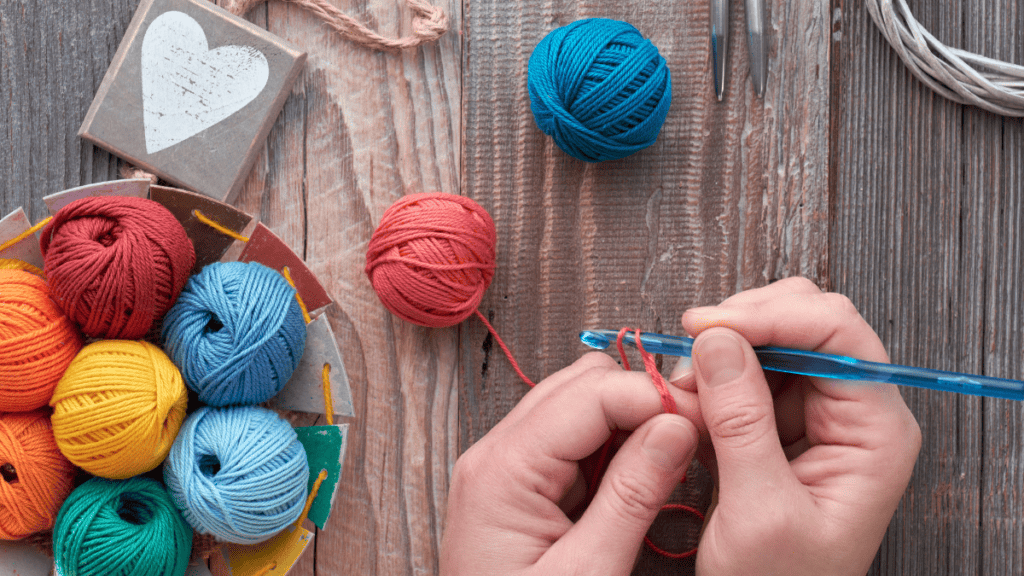
When it comes to crochet, choosing the right yarn is crucial for creating the desired look and feel of your project.
There are many different types of yarn available, each with its own unique properties and characteristics. In this section, I’ll go over some of the most popular crochet yarn types.
Acrylic Yarn
Acrylic yarn is a synthetic yarn made from plastic fibers. It’s a popular choice for beginners because it’s affordable, easy to work with, and widely available.
Acrylic yarn is also machine washable and can be dried in a dryer, making it a practical choice for everyday items like hats and scarves.
However, acrylic yarn can sometimes feel scratchy and may not have the same softness and drape as natural fibers. This is important for choosing crochet yarn types for clothing.
Cotton Yarn
Cotton yarn is a natural fiber that’s breathable, soft, and durable. It’s a great choice for warm-weather projects like summer tops and lightweight blankets.
Cotton yarn can also be machine washed and dried, but it may shrink if not handled properly which is important to know when choosing crochet yarn types.
Keep in mind that cotton yarn tends to have less stretch than other types of yarn, so it may not be the best choice for projects that require a lot of give.
Wool Yarn
Wool yarn is a natural fiber that’s warm, soft, and cozy. It’s a popular choice for winter accessories like hats and mittens, as well as for blankets and sweaters.
Wool yarn can be machine washed and dried, but it’s important to use a gentle cycle and avoid high heat to prevent felting.
Wool yarn can also be blended with other fibers like silk or cotton to create unique textures and properties. Pretty cool when choosing crochet yarn types.
Bamboo Yarn
Bamboo yarn is a natural fiber made from bamboo grass. It’s a sustainable and eco-friendly option that’s soft, silky, and lightweight.
Bamboo yarn is also naturally antimicrobial, making it a good choice for items like washcloths and baby blankets. However, bamboo yarn can be more expensive than other types of yarn and may not be as widely available when it comes to crochet yarn types.
Silk Yarn
Silk yarn is a luxurious natural fiber that’s soft, shiny, and drapey. It’s a popular choice for elegant and delicate projects like shawls and evening wear.
Silk yarn can be hand washed and air dried, but it’s important to avoid high heat and harsh detergents.
Keep in mind that silk yarn can be slippery and may require special techniques and tools to work with. If you are a beginner, this isn’t my recommendation when considering crochet yarn types.
In addition to these popular yarn types, there are also many blends available that combine different fibers to create unique properties and textures.
Some common blends include wool blends, cotton blends, and superwash merino wool. When choosing a yarn for your project, consider the look and feel you want to achieve, as well as the practical considerations like care and durability.
Yarn for Different Projects
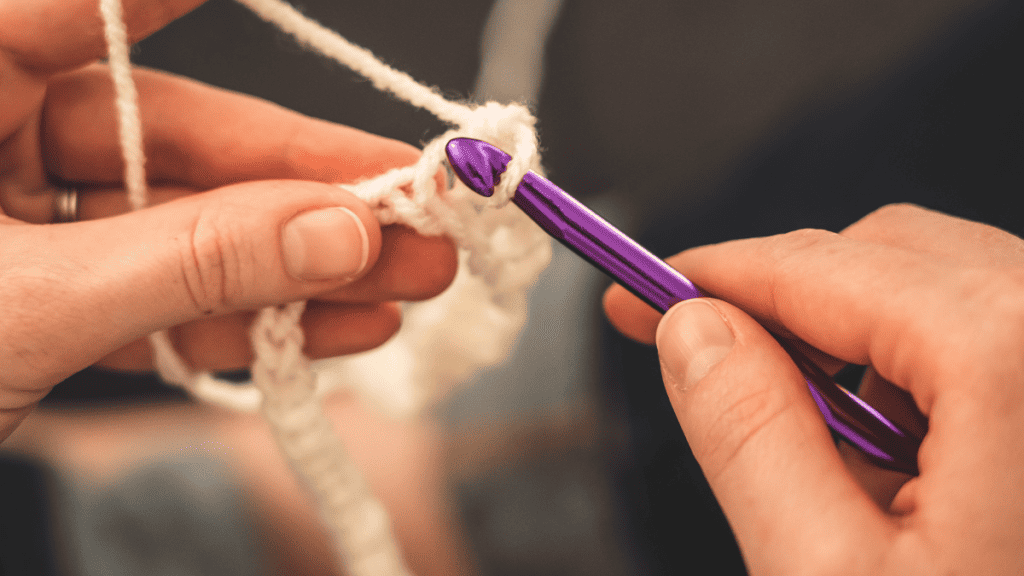
When starting a new crochet project, choosing the right crochet yarn types is crucial. The type of yarn you choose can greatly affect the appearance, texture, and durability of your finished project. Here are some tips on selecting the right crochet yarn types for different types of projects.
Crochet Projects
For most crochet projects, a medium weight, worsted yarn is a good choice. This type of yarn is versatile and easy to work with, making it perfect for beginners and experienced crocheters alike.
It comes in a wide variety of colors and textures, so you can find the perfect crochet yarn types for your project.
Large Projects
If you’re working on a large crochet project, such as a blanket or afghan, you may want to consider using a bulkier yarn.
This will help you complete your project more quickly and give it a cozy, chunky look. Just be aware that bulkier yarns can be more difficult to work with and may require larger hooks.
Knitting Projects
If you’re a knitter, you’ll want to choose a yarn that is specifically designed for knitting. Knitting yarn is typically smoother and more tightly spun than crochet yarn, which makes it easier to work with on knitting needles.
Look for a crochet yarn types that is labeled as “knitting yarn” or “knitting worsted weight.”
Summer Projects
For crochet projects that you plan to wear in the summer, such as tank tops or lightweight shawls, you’ll want to choose a yarn that is breathable and lightweight. Cotton and bamboo yarns are good choices for summer projects, as they are both lightweight and breathable.
Crochet Sweaters
If you’re planning to crochet a sweater, you’ll want to choose a yarn that is soft, warm, and durable. Look for a yarn that is made from natural fibers, such as wool or alpaca, as these fibers will provide warmth without making you feel too hot.
Type of Project
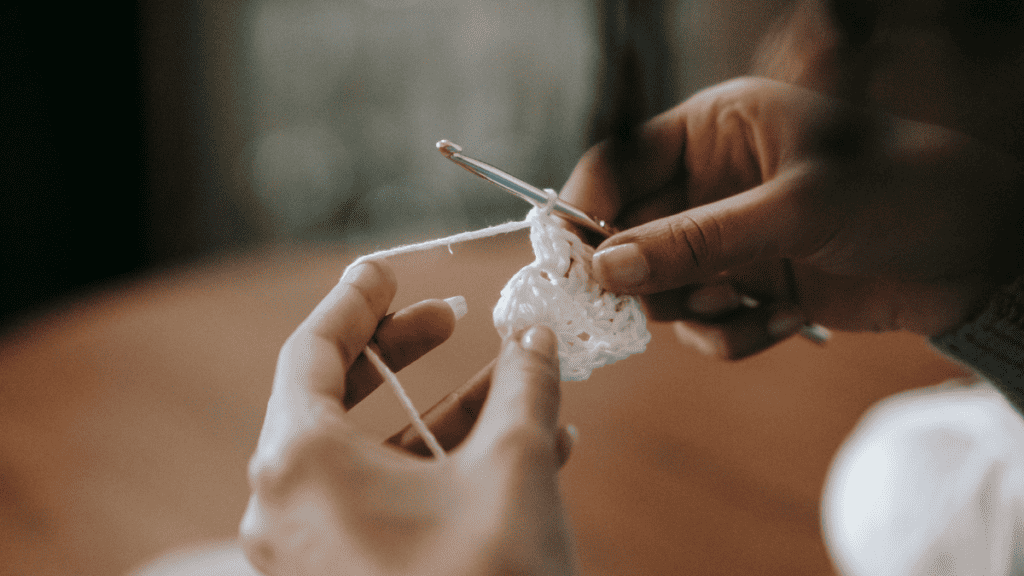
The type of project you’re working on will also affect the type of yarn you choose. For example, if you’re working on a project that requires a lot of drape, such as a shawl or scarf, you’ll want to choose a yarn that is lightweight and has good drape.
If you’re working on a project that requires a lot of structure, such as a bag or basket, you’ll want to choose a yarn that is sturdy and has good stitch definition.
Yarn Care
When it comes to taking care of your crochet yarn, there are a few things to keep in mind. First and foremost, always check the yarn label for care instructions. This will give you specific guidelines for washing and drying your yarn.
If your yarn is machine washable, you’re in luck! This makes cleaning your finished projects much easier. Simply toss them in the washing machine on a gentle cycle with cool water and a mild detergent. Be sure to place them in a mesh laundry bag to prevent tangling.
For yarn that is not machine washable, hand washing is the way to go. Fill a sink or basin with cool water and a gentle detergent, and gently swish your project around. Rinse thoroughly with cool water and gently squeeze out any excess water.
When it comes to drying your yarn, be sure to lay it flat on a clean towel to air dry. Avoid hanging it up or using a dryer, as this can cause stretching and distortion.
Overall, taking care of your crochet yarn is simple and straightforward. Just be sure to follow the care instructions on the label and handle your projects with care.
Additional Yarn Considerations
When it comes to choosing the right yarn, there are a few additional considerations to keep in mind beyond just the fiber content and weight. As a beginner crocheter, it can be overwhelming to navigate all the different properties and options available. Here are some things I’ve learned that may be helpful to keep in mind:
Yarn Texture
The texture of a yarn can greatly impact the finished project. Smooth, tightly-spun yarns are great for showing off stitch definition and creating crisp, clean lines. However, if you’re looking for a more textured look, consider a yarn with a looser twist or with added texture like boucle or chenille.
Dye Lot Number
When purchasing multiple skeins of the same yarn, be sure to check the dye lot number. Yarns from different dye lots can vary slightly in color, which can result in noticeable differences in a finished project. If possible, try to purchase all the yarn you need for a project at once and from the same dye lot.
Crochet Hook Size
The size of your crochet hook can also impact the look and feel of your finished project. A larger hook will create a looser, more drapey fabric, while a smaller hook will create a denser, stiffer fabric. Be sure to check the recommended hook size on your crochet pattern and adjust as needed to achieve the desired result.
Different Properties
Different yarns can have different properties that make them better suited for certain projects. For example, wool yarns are great for creating warm, cozy items like hats and scarves, while cotton yarns are better suited for lightweight, breathable projects like summer tops or dishcloths. Consider the intended use of your finished project when selecting a yarn.
Great Stitch Definition
If you’re working on a project with intricate stitch work, you’ll want a yarn that shows off your hard work. Look for yarns with great stitch definition, which will help your stitches stand out and create a visually interesting finished project.
Keeping these additional yarn considerations in mind can help you select the perfect yarn for your next project and ensure a successful finished result.
Yarn Companies
As someone who loves to crochet, finding the perfect yarn can make all the difference in a project. Luckily, there are many places to buy yarn both online and in person.
One option is to visit a local yarn store. These stores often have a wide variety of yarn types and brands to choose from, and the staff can provide helpful recommendations and advice. Plus, it’s always nice to support small businesses in your community.
If you prefer to shop online, there are many websites that specialize in selling yarn. Some popular options include:
- Amazon–Free shipping for yarn
- Knit Picks – offers a wide variety of yarn types and colors at affordable prices
- WeCrochet – focuses specifically on crochet and offers a range of yarns and patterns
- Jimmy Beans Wool – has a large selection of high-quality yarns and offers free shipping on orders over $75
Ultimately, the best place to buy yarn will depend on your personal preferences and needs. Whether you prefer to shop in person or online, there are plenty of options available to help you find the perfect yarn for your next project.
Crochet Basics
- Yarn Weight Chart
- How To Read Yarn Labels
- Beginner Crochet Patterns
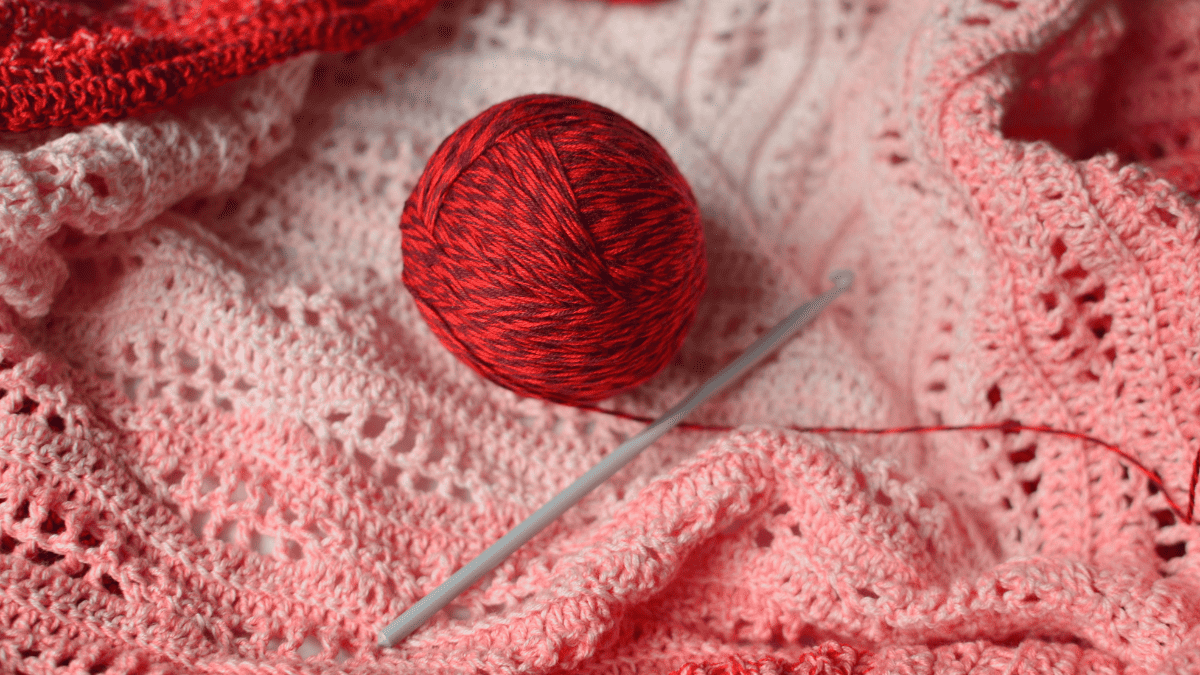
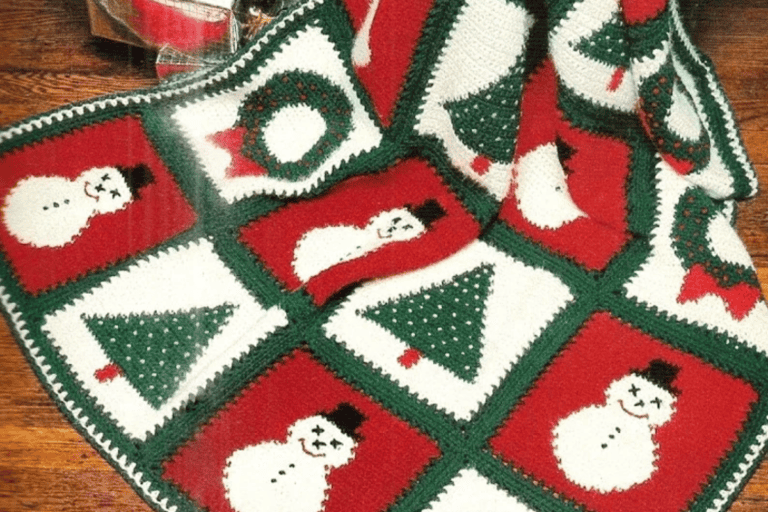
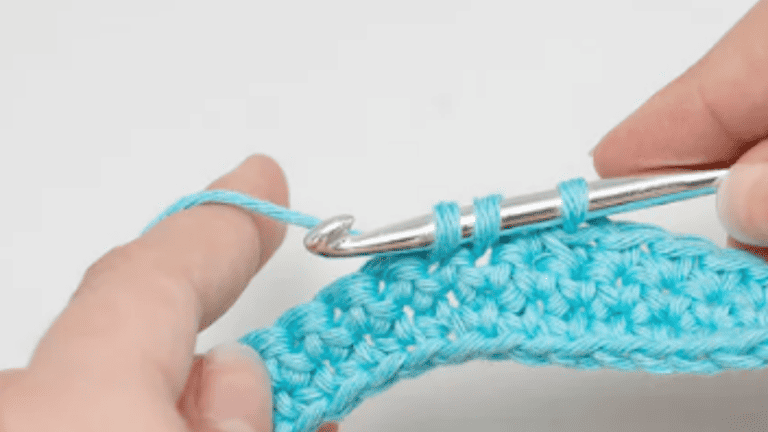
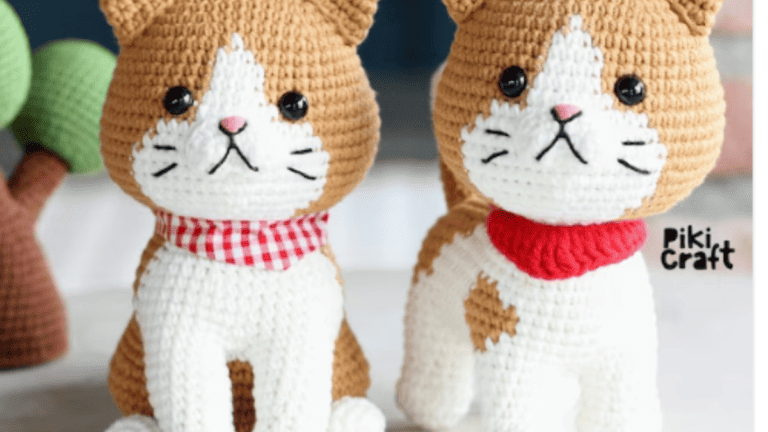

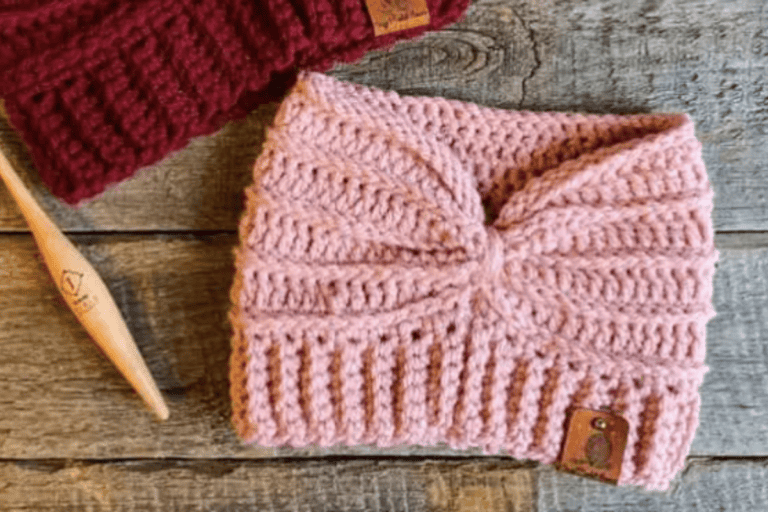
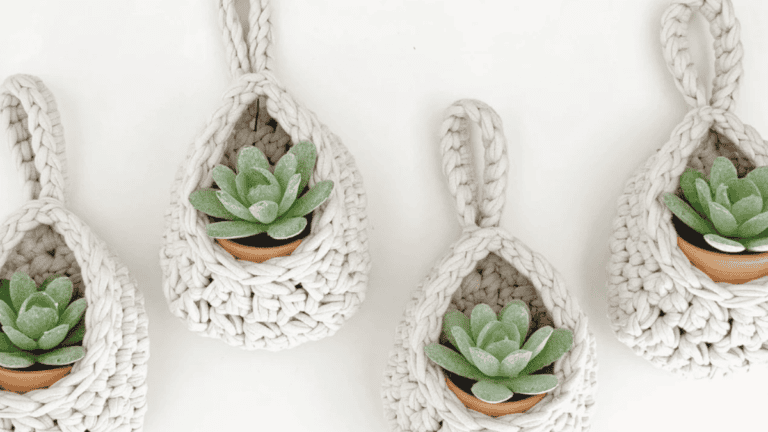
10 Comments